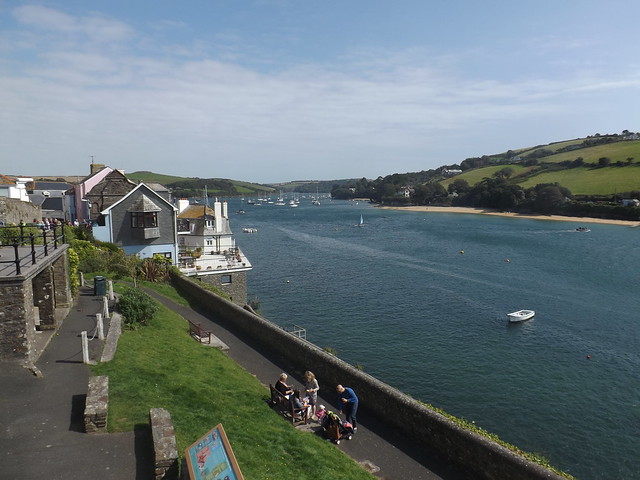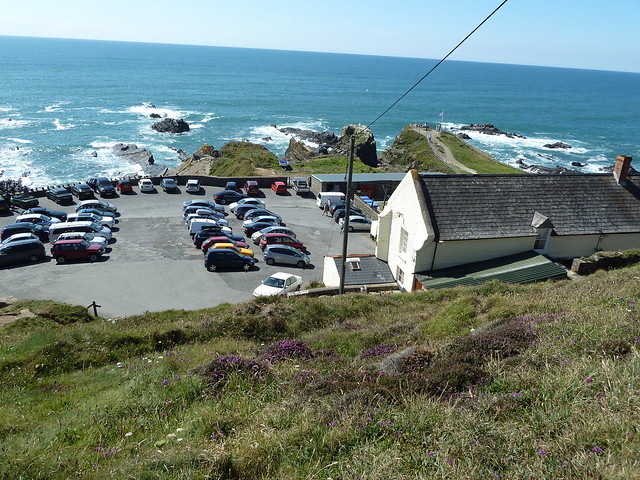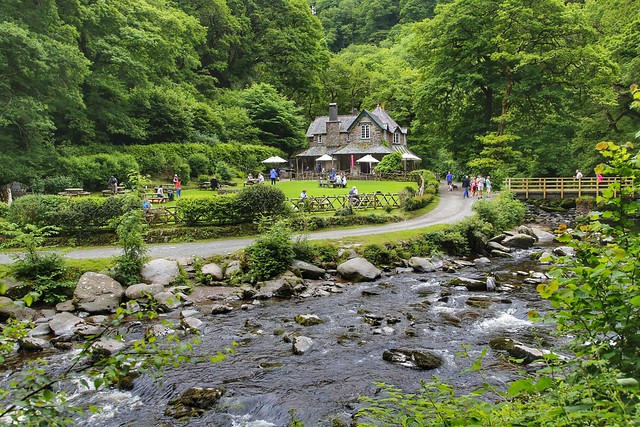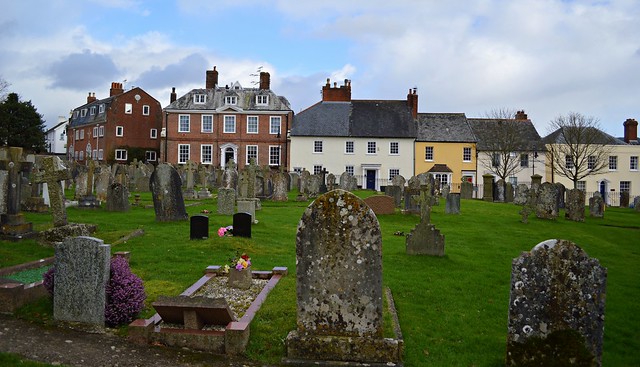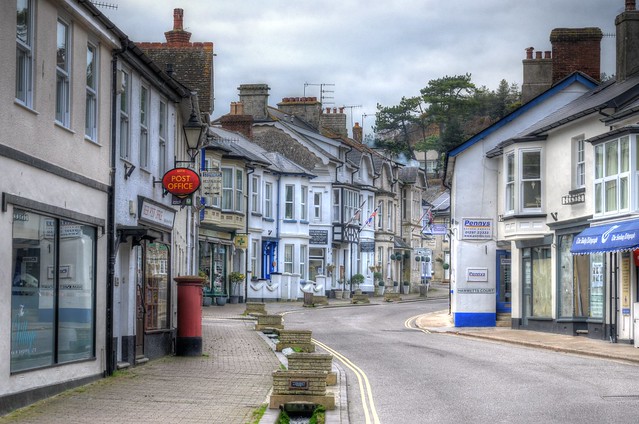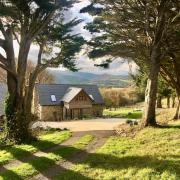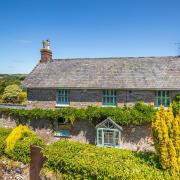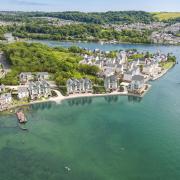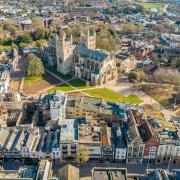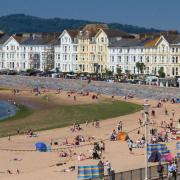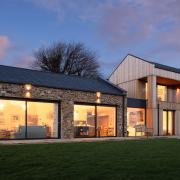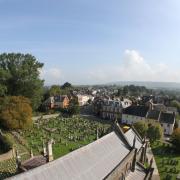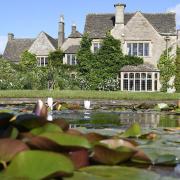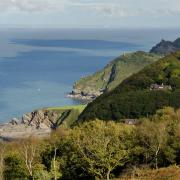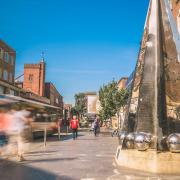Sprinkled throughout Devon’s cities, towns and villages are some of the most picture-perfect roads and lanes you could ever wish to see. Those of you who are fortunate enough to live on one of these 11 streets will know exactly what we’re talking about.
1) High Street, Clovelly
Set on a 400ft cliff in North Devon, this cobbled street is completely free of traffic - unless you count donkeys and sledges that is. Such an approach was no gimmick, however, as the street's considerable gradient made it necessary to get vital supplies to the village's businesses and to the people that called it home.
Nearly every one of these buildings - decorated in an array of floral arrangements - is listed and after making your way up from the 14th century quay at its bottom, it's certainly worth dropping into at least one of them for a well-earned refreshment. Due to private ownership, it's barely changed since Elizabethan times and to this day it's not a stretch to imagine Charles Kingsley and Charles Dickens taking in plunging views of the Bristol Channel below.
2) Cliff Road, Salcombe
Following an afternoon browsing the shops on Fore Street - Salcombe's winding main street near the waterfront - head towards the open sea along Cliff Road for elevated views of Salcombe Harbour, the dramatic cliffs facing the resort town and, if you time it right, vessels of all shapes and sizes taking part in a regatta below.
Walkers will want to stop at regular junctions as the mile-long road snakes adjacent to the water, giving you ever-changing views of the area's breath-taking topography. After navigating the narrow, occasionally-walled road, drivers will be best served parking up at Salcombe North Sands for stunning snaps of this small beach.
3) Cockington Lane, Cockington
When visiting this 16th century village near Torquay, you feel as though you have been transported back in time: the thatched cottages, stone walls, beautifully-maintained gardens and the narrow, winding roads all contribute to its wonderfully old-fashioned atmosphere.
Cockington Lane is the main artery through the heart of the village and from the road you can absorb the place's essence and easily access historical attractions like the Old Forge or the Weavers Cottage Tea Shoppe. To explore the hills surrounding Cockington, take either Totnes Road - leading to Cockington Court - or Vicarage Hill, two lanes almost entirely surrounded by dense greenery.
4) Wreyland Path, Lustleigh
It may be impossibly narrow by today's standards - as a non-resident you'd be incredibly brave driving anything but a Smart car down there - yet along its 0.2 mile length it manages to cram in masses of typical Dartmoor countryside beauty.
You'll weave tightly past gorgeously decorated stone and wood cottages while taking in the noises of nearby farmland and, if you're lucky, in the summer you may be treated to the sound of leather on willow as Lustleigh Cricket Club play on their beautiful tree-lined ground. When the road meets the Wrey Brook, this path into the village becomes accessible only by foot.
5) Road to Hartland Quay, Hartland
Starting in the remote West Devon village of Hartland, head towards the neighbouring hamlet of Stoke along a road that runs adjacent to the Abbey River. Emerging from thick woodland into rolling fields filled with sheep, you'll soon see the spires belonging to the Church of St Nectan to your right.
Once through the village, you'll get your first sight of the Bristol Channel. From there, views of the wild, rugged coastline will open up dramatically around you - as hard as it may be, try to keep your eyes on the road. Stop regularly if you wish - each corner of the road presents a new angle of the cliffs and stunning rock formations - until you reach a quay that thrived until the end of the 19th century. Finally, grab a drink from Wreckers Retreat and let it all soak in.
6) Road to Watersmeet drop off, Watersmeet
Set in North Devon and within the boundaries of Exmoor, Watersmeet House is quite possibly one of the National Trust's most stunning properties. Surrounded by 2000 acres of ancient woodland and hills, it's incredibly popular with ramblers and photographers who wish to immerse themselves in this whimsical location.
Although you have to park on the A39 above the house, a small road running next to the East Lyn River ends with a drop-off point 20 yards from the tea rooms, meaning you don't even have to leave your car to see this stunning spot. The road is mere yards from the water and its gentle wash provides the perfect audio accompaniment to this serene, secluded spot.
7) Paternoster Row, Ottery St Mary
It's only a short stretch of road in this East Devon town famous for the tar barrels celebration on Guy Fawkes Night but Paternoster Row is well worth a quick walking visit when perusing the area.
Both red-brick and quaint pastel terraced houses with imposing porches line the street as it bends round by one of the town's most iconic attractions, the Church of St Mary. Built over 700 years ago, it is unusually large for a town of Ottery's size and so its eye-catching features - many of which have been added since it was first erected - dominate the view. As you pass the graveyard and near The College, keep an eye out for the Queen Victoria Jubilee Monument.
8) Fore Street, Beer
If you're arriving from Seaton on the South West Coast Path you'll come right to the bottom of Fore Street via the very short Sea Hill. Refresh yourself and soak in the sea views at the Anchor Inn before heading on to explore the wide range of shops, pubs and eateries lining the main street of this town nestled in Lyme Bay.
The front of every building is meticulously maintained while flags and hanging baskets further demonstrate that this is an area well taken care of by its residents. We recommend picking up a unique piece at the Steam Gallery, nipping in to St Michael's Church and then trying the incredible Smugglers Kitchen for dinner.
9) The Quay, Exeter
Exeter's quay was first established in Roman times and although it's no longer used for its original purpose, it is still a thriving hub of activity. Just like back then, locals and travellers alike mix in the area as they admire the cobbled streets and watch vessels make their way along the River Exe.
Cafes, pubs, restaurants and independent shops are located within the original stone warehouses, creating one of Devon's most unique cultural attractions. To delve further into the history of the area, experts at the Custom House Visitor Centre are always on hand to provide information and point you towards fascinating places you'd never think to explore.
10) Cornhill, Hemyock
Only metres from the remains of the 14th century Hemyock Castle, this lane brings you right into the centre of town if you were coming from a Dunkeswell direction. Lined by hedges and many good-looking countryside homes from various periods, it also crosses over St Margaret's Brook.
Just as you reach the junction with Culmstock Road, the flower-rich grounds of St Mary's Church and The Catherine Wheel pub will certainly catch your eye and possibly tempt you inside. Before you make your way into the rest of the Blackdown Hills AONB, take a picture of the green ornate water pump just over from the church.
11) Southside Street, Plymouth
Containing an interesting mix of timber framed, stone and red-brick buildings that look particularly good when adorned in classic summer bunting, this street by the harbour is one not to be missed. Some of Plymouth's best pubs and restaurants are based here while you can also drop into the Plymouth Gin Distillery to experience a craft they have been refining since 1793.
As you casually stroll along this part-cobbled, part-tarmac street, pop your head down any of the many lanes branching off the busy thoroughfare to see what you can find. If you can't find something to do or somewhere to go on Southside, it naturally runs into The Barbican where even more waterfront establishments await.
This article was updated by Martha Griffiths in July 2021.




